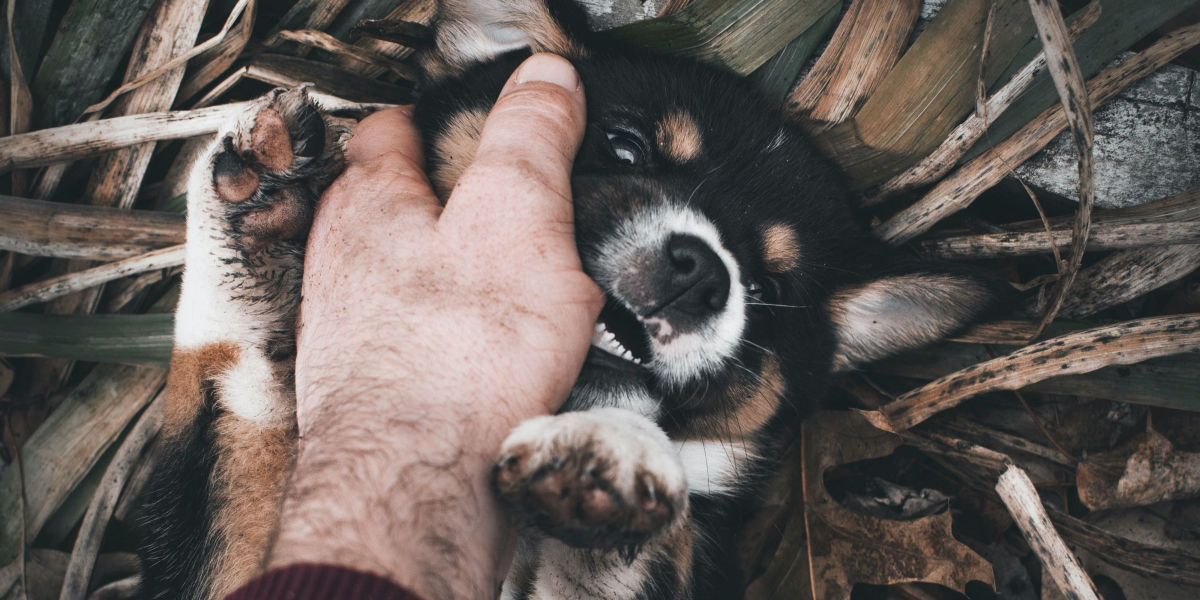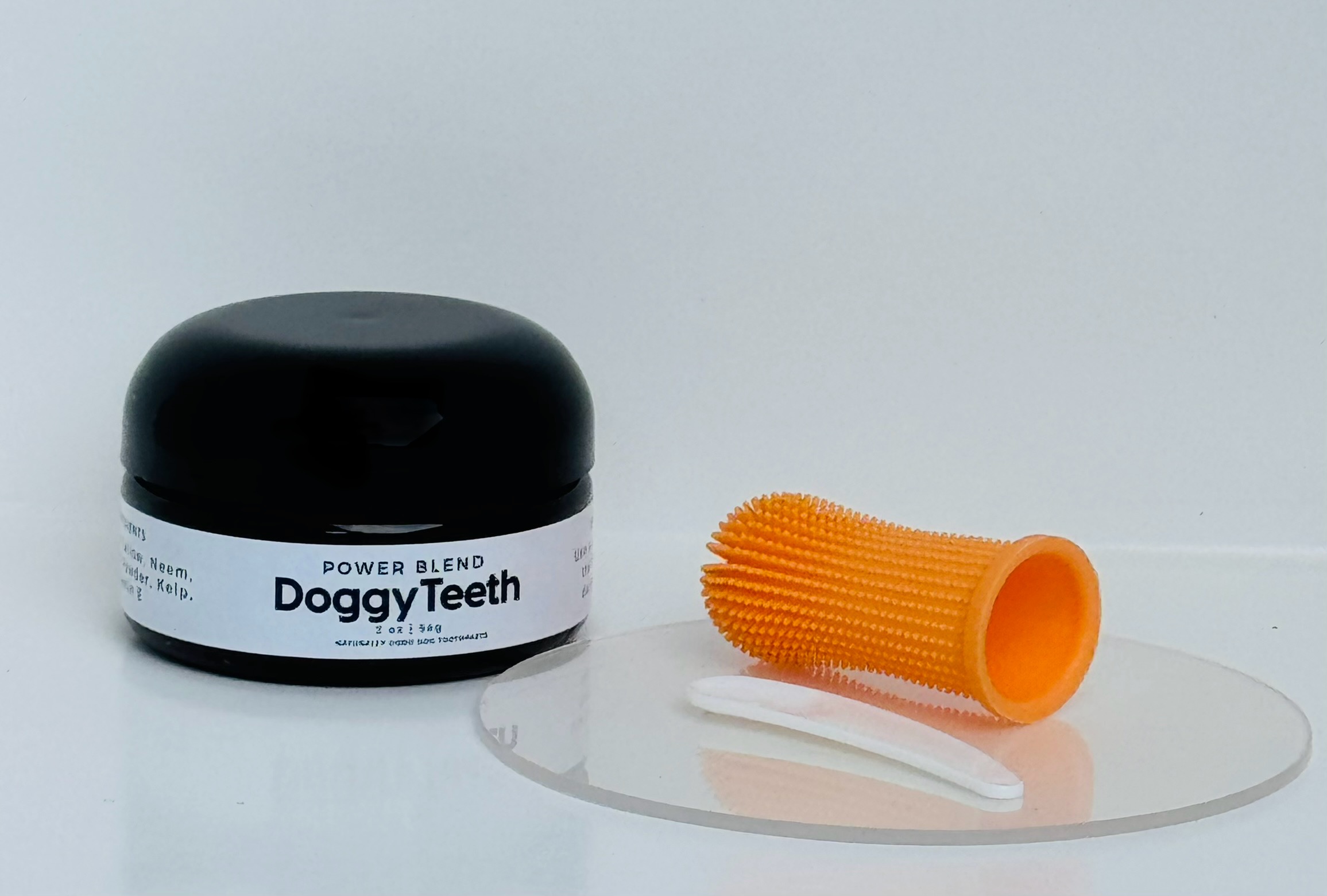Brush puppy teeth… so many puppy owners wonder if it’s really necessary. After all we all know that those first teeth will be falling out in short order so is it really necessary? It’s actually one of the most important things you can do with your puppy and we are going to cover why here.
Brushing your puppy’s teeth is more than a good idea; it’s essential for their overall health. Just like humans, dogs can suffer from plaque buildup, gum disease, and other dental issues if their teeth aren’t properly cared for. So, yes, it’s very beneficial to brush your puppy’s teeth.
One of the primary benefits of regular brushing is preventing dental issues like gum disease and tooth decay. Puppies have delicate gums and teeth that can easily harbor bacteria and plaque. Keeping their mouths clean helps avoid infections which can lead to more severe health problems down the line.
Regularly brushing your puppy’s teeth also helps in promoting fresh breath. Bad breath in dogs often signifies underlying oral hygiene issues. Keeping their teeth clean will ensure that their breath remains fresh and that they are more enjoyable to be around.
A clean mouth also supports their overall well-being. Dental disease can affect your dog’s major organs, including the heart and kidneys. By maintaining good oral hygiene from a young age, you’re setting your puppy up for a healthier adulthood.
Establishing a brushing routine early not only supports their oral health now but also helps in the transition to brushing their adult teeth. Puppies who get used to having their teeth brushed when they’re young are more likely to accept it as part of their grooming routine as they grow older. This habit is key to maintaining lifelong dental health.
Brush PuppyTeeth At The Right Time
The ideal age to start brushing your puppy’s teeth is around 8 weeks old. At this stage, they’re more open to new experiences and can adapt to teeth brushing as a normal part of their routine. Starting young means they won’t find the process unusual or scary.
Begin by brushing your puppy’s teeth at least 2-3 times a week. Regularity is important to establish the habit and ensure their teeth stay clean. Try to pick a quiet time when your puppy is relaxed, like after playtime or before a meal when you’ll have their full attention.
Getting your puppy started with DoggyTeeth is setting both of you up for the win because the taste of grass-fed beef tallow is irresistible to them and the ingredients are all natural and pure.
Approach the first brushing session with patience and gentleness. It’s crucial to make the first experience positive. Sit your puppy down, let them sniff the toothbrush, and try gently touching their mouth and gums with your fingers first. This gets them used to the sensation. Over time, introduce the toothbrush gradually, giving them plenty of praise and treats to create a positive association.
When you’re ready to start brushing, use gentle, circular motions. Focus on the outer surfaces of their teeth where plaque tends to build up. Don’t worry if you can’t brush the entire mouth at first. The goal is to get your puppy accustomed to the process gradually without causing stress or fear.
If your puppy resists, don’t force it. Instead, take a break and try again later. Consistency is key, but so is patience. Make brushing their teeth a fun activity and get them comfortable with having their mouth handled. The aim is to make teeth brushing a regular, stress-free part of their routine, building a foundation for future dental care.

Make brushing your puppies teeth a fun engaging experience. Be animated and have fun with your puppy while you get them accustomed to having their teeth brushed. Always be organized and have everything ready to brush your puppies teeth before you get started with their favourite treats at hand so you can focus all your energy on a great training experience with your puppy. We’ve found the best time to brush puppy teeth is before their meals as you will have a much more captive audience that way.
Tools and Techniques for Effective Puppy Teeth Brushing
Choosing the right tools is crucial for effective puppy teeth brushing. The most important tool is a toothbrush specifically designed for dogs. These brushes are softer and have angled bristles to clean your puppy’s teeth without causing discomfort. Finger brushes are also great as they allow you better control and are less intimidating for puppies.
Pair your toothbrush with dog-friendly toothpaste. Human toothpaste isn’t suitable for dogs because it contains ingredients that can be harmful if swallowed. There’s a lot of commercial pet toothpastes on the market that come in flavors like chicken or peanut butter, making the experience more enjoyable for your puppy. However those flavors are chemical based and more and more it’s showing that natural is the best way to go whenever possible.
We’ve found the DoggyTeeth Power Blend Kit to be the best way to get your puppy started right on a lifetime of good dental care. It’s made with grass-fed beef tallow with the natural active ingredients organic kelp, organic olive leaf and neem bark so it supports the microbiome of your puppy’s mouth while it freshens their breath. And it is a natural taste treat that your puppy will find irresistible.

When choosing between a regular toothbrush and a finger brush, consider your puppy’s size and temperament. Finger brushes can feel more natural and less invasive, which is ideal if your puppy is nervous or squirmy. On the other hand, regular toothbrushes can cover more area in less time, which is beneficial as your puppy gets more comfortable with the process.
Introduce the toothbrush and toothpaste gradually. Let your puppy sniff and taste the toothpaste first. Once they’re curious and comfortable, gently start brushing in circular motions focusing on the outer surfaces of their teeth. Don’t worry too much about the inner surfaces initially, as the main goal is to get your puppy accustomed to the brushing routine.
Regularly inspect your tools for wear and replace them every few months. Worn-out brushes won’t clean effectively and might cause your puppy discomfort. Always store your puppy’s brushing tools in a clean, dry place to keep them hygienic.
Ensuring a Positive Experience for Your Puppy
A positive teeth-brushing experience starts with a calm and patient approach. Puppies can be easily scared by new experiences, so it’s important to create a relaxed atmosphere. Choose a quiet location and a time when your puppy is already calm, perhaps after a walk or play session.
Start by gently touching your puppy’s mouth and rewarding them with treats and praise. Gradually introduce the toothbrush, letting them sniff and get familiar with it. This step-by-step approach helps them associate the toothbrush with positive experiences.
Using a soothing voice and gentle movements can make a big difference. Avoid holding your puppy down or forcing them to accept brushing, as this can create a negative association. Instead, be gentle and use positive reinforcement. Offer treats and praise throughout the process to keep them motivated and happy.
Making teeth brushing a fun activity can also help. Turn it into a game by incorporating play and affection. Some puppies respond well to a favorite toy or treat as a reward after brushing. This makes it more likely they’ll look forward to brushing time.
Consistency is crucial for building a routine. Aim for short, regular sessions rather than infrequent, longer ones. Over time, your puppy will come to see teeth brushing as a normal part of their routine, reducing anxiety and making future sessions easier. That’s going to set your puppy up for a lifetime of easy good dental care that will help create a healthier experience for your puppy and reduce your exposure to expensive veterinary bills.